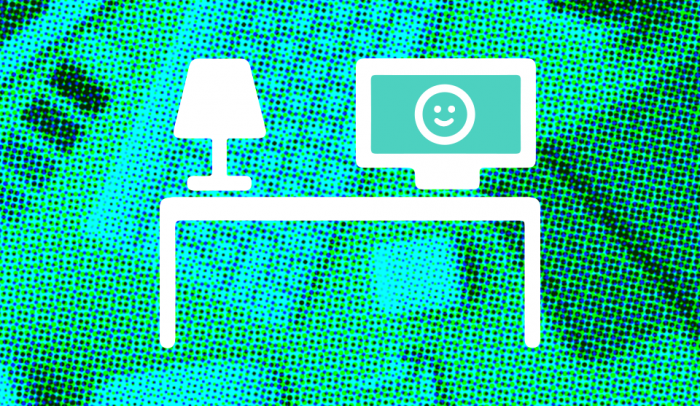In the COVID-19 pandemic, we are facing a world none of us have ever dealt with before. This is the first time in our lifetimes that we’ve been asked to remain at home for the safety of the human race. There is a lot of uncertainty about what happens next—how do we care for each other and ourselves, what will happen to our communities, will we still have jobs? Many of us in the creative industry are pretty lucky right now—we’re pretty good at working from home already.
Still, work has changed for everyone. The role and expectations of a creative leader have changed almost overnight. This is a time to be strong and compassionate, to take care of yourself, and to lead by example.
Let’s look at how role of the creative manager has changed, and how you can best support your creative team through this.
Creativity
One thing that sets designers and marketers apart from other knowledge workers is our focus on creativity. It’s usually the reason we all got into this career in the first place. We love to find solutions, push the state of design, and help people solve problems with our unique visual language and methods.
Your team’s creativity is probably anywhere but in its work right now. It’s being used to entertain kids all day or to deeply sanitize everything that comes into the homes or to put together yet another dinner out of pantry staples.
All of this is natural in these times—but it also means that your teammates don’t have much left to give to work projects. Especially when those projects don’t feel as important as keeping everyone in their households safe, sane, happy, and healthy. Creative energy, like will power, has limits. And it’s very hard to force creativity.
This is your time to shift gears as a creative leader. Help your team find solutions, but maybe don’t push the envelope as much as usual. Some people on your team will need the extra breathing room, while others may find work to be the place where they can do something worthwhile. Look at each teammate as an individual. Figure out who needs an easy win, and who needs a big enough pile of work that they can come in and crank stuff out.
Beyond the workload, find what is still sparking the passion in your creatives. For those that find meaning in work, guide them to the projects that really need that energy right now, and shift the more mundane work to another member of the team. For some of your colleagues, joy isn’t coming from work, but creativity still manifests in baking bread, or water coloring, or taking care of plants. Find the creative spark in each of your people and nurture it, so that they still have it when we come out of this.
Extroverts and Introverts
You’ve probably spent a lot of time over the years worrying (and reading) about the introverts on your team. Are they going to be okay at this after-work social thing? Are they sharing and talking in meetings? Are they really okay over there in the corner producing amazing work with almost no interaction from the rest of the team? Are they happy?
Maybe you’ve never even spent time worrying about your extroverts—your type-A people that always help you kick off a team-building exercise. I know I haven’t spent much time worrying about them—until now. Now, it’s the extroverts that are suffering. Those that thrive on human interaction, love to hit the social club after work, and somehow also manage to drum up more business.
Now they are cooped up, unable to recharge around people they aren’t living with. Now is the time to privately check in with them. See how they are doing, see if they need more or less work. Nurturing your extroverts means helping them find things to get excited about and keeping them looking forward to the day they can leave their houses again. At our agency, one partner is immunocompromised and two are on strict quarantine—the extrovert in our group runs errands for them on the weekend and helps distribute team materials.
Tools for Helping Creatives
I’ve worked remotely for more than a decade, and I’ve helped set remote strategies for a few different companies. These are some of the strategies we use that work.
Daily Morning Standups
This is probably the most important thing on the list. Get everyone together, near the beginning of the day, and talk about what is happening today. To give everyone a little more time to gather themselves at home, we do ours 15 minutes after the usual start of our day.
As a design leader, this is your chance to set the tone. For me, most days mean getting dressed in work clothes and showing up brimming with energy. We’ve had a couple of hits in our agency during all of this, so a few times, I’ve shown up somberly to address the hard things.
Once you’ve set the tone, the team lead starts with the important stuff—which projects are going well, which need more attention. This is a good time to celebrate the wins—shout out someone who did a great job on this project—and review each teammate’s plan for the day.
Do these standups on video so that you, as the team lead, have a chance to see everyone and visually check on how they are doing. You can read a lot about what’s going on when you take the time to look at each person. Are they stressed? Are they wearing the same t-shirt for the fourth day in a row? When you see warning signs, it’s a good time to check in privately with them.
Friday Get-Togethers / Get Off Work Early
We’ve tried both get-togethers and shorter days on Fridays and at this point, we let how we feel guide us. Sometimes we’re ready to chill together. We call our Friday get-togethers “Wine, Water, Whisky, Whatever (WWWW).” We move to our couches and enjoy a fine glass of Hibiki or some avocado toast. We chat about what we’re making for dinner or what craft/home/self-care stuff we’re doing over the weekend.
Almost 50% of the time, we cancel this because no one is feeling it and we all want to chill alone or go outside. Let your team help you guide these.
Stack Work For Your Team
This is the hardest time to be a self-starter, so you may need to carve out time to rack and stack work for your creatives. Whether you take 30 minutes at the end of your day or decline corporate meetings that don’t need you right now, find the time to make sure your team all has projects that are interesting to them lined up. Make sure no one feels the need to punch the timeclock when kids are yelling and dogs are barking and they have to go make dinner.
Shorten Work Days and Weeks
There will be a lot of burnout as we come out of this. Those of us lucky enough to work from home will take that very seriously and may work more than if we were in the office to hold on to our jobs.
Often as a leader, you are in charge of pushing your team to produce more work, better and faster. Right now, you want your team to keep moving, but it’s time to relax the pace. Consider shortening your days and/or your weeks. We’ve all turned back into pioneer men and women, pouring candles, baking bread, making our meals from scratch. We need a bit more time to keep our lives together. The more time we spend ensuring our homes and families are safe, the better our focus will be when we’re actually at work. Working less right now will pay off in spades.
Take Extra Care
The idea that brings me a lot of comfort right now is that we’re all in this together—all sectors, regions, and industries. Clients are in the same boat. It’s possible that how you navigate this difficult time will be remembered by your team more than any other time in your leadership career.
Share appropriate information as you can. If you are able, tell your entire team what the strategy is for this time and the economic impacts that will follow. Talk to them about the sales pipeline and the clients at the highest risk. Encourage compassion and care towards clients—especially those in high-risk fields like hospitality, childcare, and event-planning..
Make sure to take care of yourself, as well. Your job right now is to pull it together during work hours and guide the team. Make sure you are caring for yourself so that you are ready to show up and do that.
Amber Sawaya is the director of Anchor & Alpine, a branding, print, and web agency. She is a decorated UX expert, a best-selling author, an inventor on two UX patents, and an invited speaker to several sold-out presentations.



